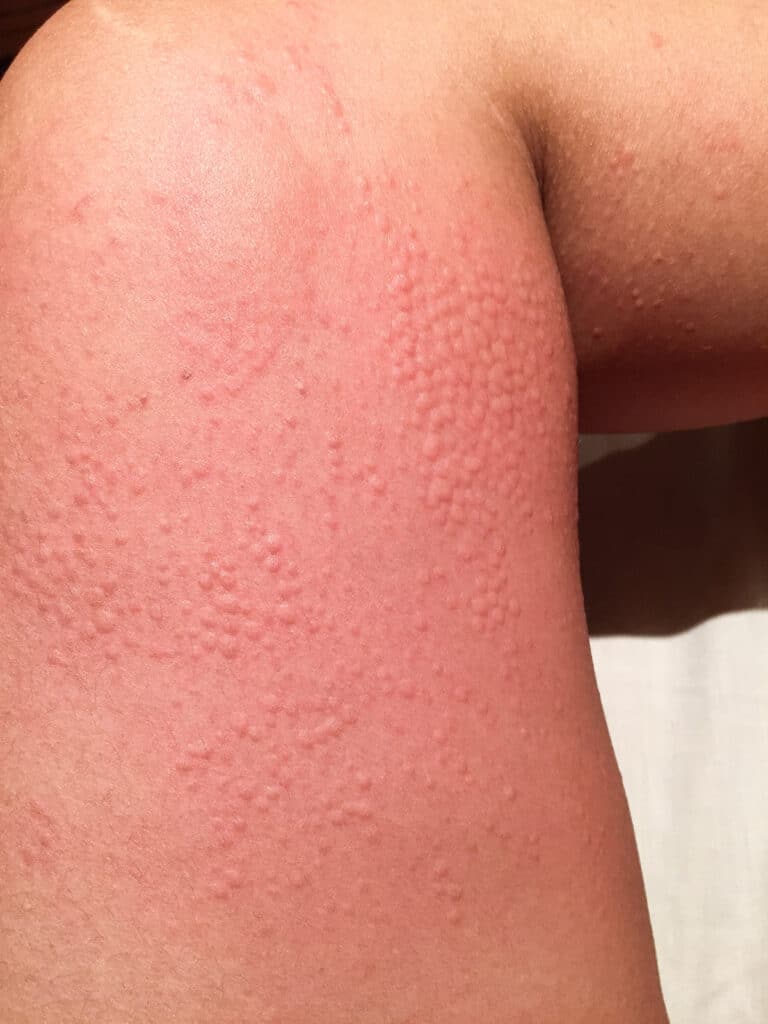Allergist Chicago,Cold Urticaria

According to Cleveland Clinic, Cold Urticaria is a rare condition that causes an allergic reaction to cold temperatures. It usually appears as a rash or hives after you are exposed to cold air, water, food or drink and it is not contagious.
What does Cold Urticaria look like?
Symptoms can be mild to severe and can take up a small to large part of your body; they are different from person to person. The main symptom is a skin rash that happens to you after you are exposed to something cold but comes about after you are exposed as your skin’s temperature rises, but this is a full symptoms list:
- Hives, bumps or welts
- Itchiness
- Redness
- Swelling
- Fatigue
- Fever
- Headache
- Joint pain
In really severe and rare cases, a person may also experience a larger systemic reaction that affects more of their body, including: Shortness of breath or Wheezing, Fainting. Heart palpitations, and even Anaphylaxis.
What triggers Cold Urticaria?
- Stepping outside in cold weather
- Eating or drinking something cold
- Swimming or bathing in cold water
- Ice touching your skin
There are two types of cold urticaria:
- Familial: this is hereditary cold urticaria and is considered to be passed down in families. The symptoms may take longer to appear anywhere from 30 minutes to 48 hours after exposure and they can last a day or two.
- Essential or Acquired: This is the more common type and happens to someone with no family history of the disease. Symptoms usually appear quicker than in Familial; they will usually appear a few minutes after exposure to cold and they go away quicker (usually within an hour or two).
Sometimes, symptoms can be more severe and Cold Urticaria can be associated with an underlying etiology which could be viral infections or blood disorders that may be somewhat serious.
Why does it happen and can it happen again?
Cold urticaria happens when our body releases histamines in reaction to cold exposure. Our immune systems make histamines in response to an allergen; however, the reason for the histamine release is unknown. Can you get it more than once? Yes, cold urticaria can come back after treatment.
How do we fix it?
This will sound funny, but the most effective way to manage cold urticaria is to …you guessed it, stay warm and avoid cold! Other treatment options include:
- Antihistamines: These can be used before exposure to cold to avoid a reaction or after to calm it down
- Desensitization: This basically means exposing your body to increasingly cold temperatures like cold showers that get colder over time. This is a little more worrisome and we suggest doing so with a loved one nearby that can monitor reactions.
- Antibiotics: Specialists add antibiotics if they suspect an infectious etiology but not for the cold urticaria directly.
- Epinephrine injection
- Omalizumab injection
Important Note
Make sure you notify all of your doctors if you have the condition, especially if you have to schedule surgery. Since operating rooms are typically cold, some people with cold urticaria have reactions while under anesthesia.
If you have gotten rash or hives after being exposed to something cold, reach out to our office by calling 847-781-3002 or emailing us at info@majmudarallergy.com and come in for an exam to see if our specialists can determine whether you need treatment for or protection from cold urticaria today!

